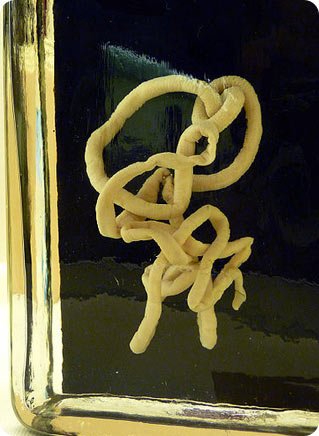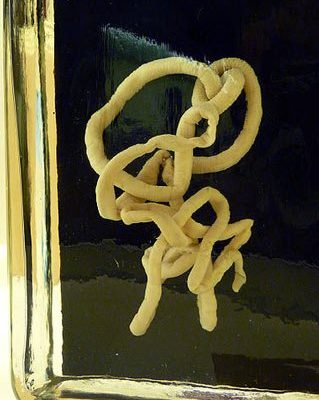
But how do you go about measuring something that lives in the soil or hides in aquatic environments? It’s not just about pulling out a ruler and guessing. You need a systematic approach that ensures accuracy while keeping your data organized. Here’s the thing: proper documentation is key to effective field studies, especially when you’re dealing with unique creatures like bootlace worms.
Why Measure Bootlace Worm Length?
You might be wondering why the length of a bootlace worm matters in the first place. Measuring their length can give researchers insights into their growth patterns, health, and whether they thrive in specific environments. For instance, if you find longer worms in a certain habitat, it could indicate that the environmental conditions there are particularly favorable.
Moreover, documenting their size helps scientists track changes over time. If a population’s average length decreases, that might signal shifts in the ecosystem—perhaps due to pollution or climate change. Understanding these patterns is vital for conservation efforts and helps maintain biodiversity.
Tools for Documenting Length
To accurately measure the length of bootlace worms, you’ll need a few reliable tools. A flexible measuring tape is a favorite among researchers because it can easily accommodate the worm’s curves. You could also use a meter stick, but a flexible tape will give you a more precise measurement, especially in confined spaces.
Here are some essential tools you might consider:
- Flexible measuring tape
- Digital calipers for smaller segments
- Data sheets or field notebooks for recording measurements
- Camera for visual documentation
Having a good set of tools not only streamlines the process but also helps avoid errors. After all, you wouldn’t want to misjudge a worm’s length by a few centimeters—it could mean missing critical data!
Field Techniques for Accurate Measurement
When you’re out in the field measuring bootlace worms, you want to make sure you’re getting accurate results. Here’s how to do it:
1. **Capture the Worm**: Gently coax the worm out of its hiding spot, being careful not to harm it. You can use a small trowel for this.
2. **Straighten It Out**: Carefully lay the worm on a flat surface. This can be tricky since bootlace worms are quite squiggly! Take your time to avoid snapping it.
3. **Measure**: Start at one end of the worm and extend the measuring tape along its body. Make sure to record the length immediately to prevent forgetfulness.
4. **Document Everything**: Include the date, location, and any other observations about the environment. This context can be invaluable later on.
By following these steps, you can ensure that your measurements are as accurate as possible while providing a clear picture of the bootlace worm’s characteristics.
Challenges in Measuring Bootlace Worms
Measuring these worms isn’t always straightforward. One significant challenge is their habitat. Bootlace worms often dwell in muddy or slippery areas, making it tough to get a clean measurement. And let’s be real—these creatures can be slippery!
Another challenge is ensuring that you’re consistently measuring from the same point. Some researchers recommend marking the worm’s head and tail with a non-toxic, eco-friendly dye before measuring. This helps you understand where to start and stop your measurement, avoiding any confusion that arises from movement.
Finally, different species of bootlace worms can exhibit variations in body shape and flexibility. It’s essential to familiarize yourself with the specific type you’re studying, as this knowledge will help you adjust your measurement strategy accordingly.
Documenting Your Findings: Best Practices
Once you’ve got your measurements down, the next step is documenting them effectively. Here are some best practices to keep in mind:
– **Use Clear Labels**: Ensure that all your data sheets are labeled with relevant information, including date, location, and even the weather conditions.
– **Organize Your Data**: If you’re collecting data from multiple locations, consider using a digital spreadsheet to keep everything organized. This makes it easier to analyze later.
– **Visual Documentation**: Don’t underestimate the power of images! Take clear photographs of the worms in their habitat or during the measurement process. These can be helpful for presentations or reports later on.
– **Regular Updates**: If you’re conducting a long-term study, make a habit of reviewing and updating your data regularly. This can help you spot trends and adjust your research methods as necessary.
By following these practices, you can ensure that your documentation is thorough and useful for both your research and future studies.
The Importance of Collaboration in Field Studies
Field studies, especially those involving bootlace worms, are often collaborative efforts. Engaging with fellow researchers can provide different perspectives and enhance the overall quality of your study. Collaborating not only helps share responsibilities but also allows for the exchange of ideas and techniques.
Consider organizing team outings for measurements. Working with a group can also make data collection more efficient. Plus, having multiple eyes on the field can improve accuracy—someone might spot a detail you miss!
Don’t hesitate to share your findings with local researchers or institutions. Your data on bootlace worm lengths could feed into broader ecological studies, contributing valuable information to the scientific community.
Documenting the length of bootlace worms in field studies is not just a trivial task; it’s a vital aspect of understanding their role in the ecosystem. By using the right tools, techniques, and practices, you not only ensure accurate measurements but also contribute valuable data to broader ecological research.
Remember, every measurement tells a story about these intriguing creatures and the environments they inhabit. So, next time you embark on a field study, take a moment to appreciate the importance of what you’re documenting. It could make a world of difference in understanding the intricate web of life these worms are a part of. Happy measuring!

